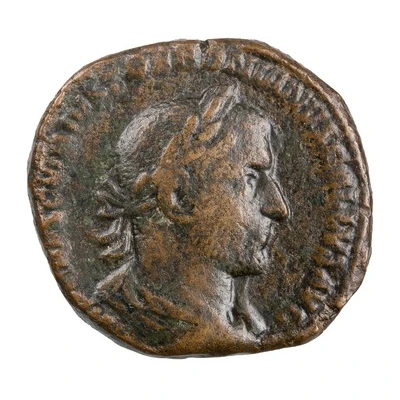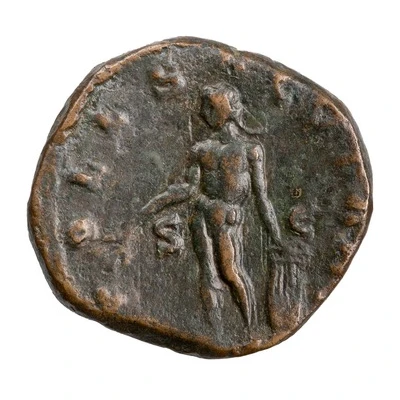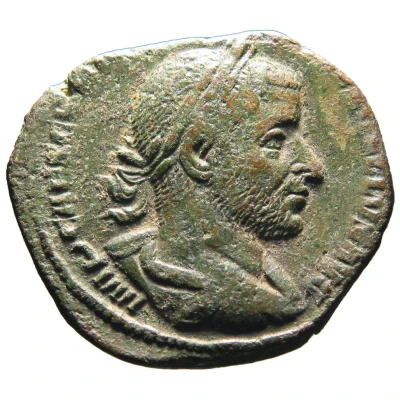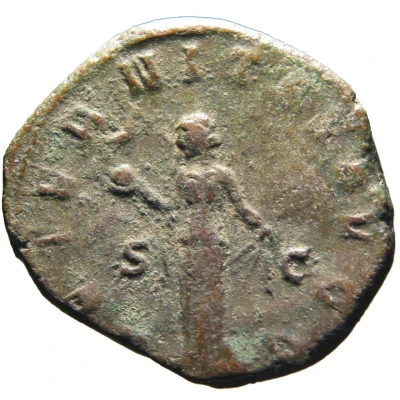


© American Numismatic Society (ANS)
Sestertius - Trebonianus Gallus APOLL SALVTARI S C; Apollo
| Bronze | 16.3 g | 27.5 mm |
| Issuer | Rome › Roman Empire (27 BC - 395 AD) |
|---|---|
| Emperor | Trebonianus Gallus (Gaius Vibius Afinius Trebonianus Gallus) (251-253) Volusianus (Gaius Vibius Volusianus) (251-253) |
| Type | Standard circulation coin |
| Years | 251-253 |
| Value | Sestertius (⅛) |
| Currency | Antoninianus, Reform of Caracalla (AD 215 – 301) |
| Composition | Bronze |
| Weight | 16.3 g |
| Diameter | 27.5 mm |
| Shape | Round (irregular) |
| Technique | Hammered |
| Orientation | Variable alignment ↺ |
| Demonetized | Yes |
| Updated | 2024-10-05 |
| Numista | N#283617 |
|---|---|
| Rarity index | 100% |
Reverse
Apollo, nude, standing left, leaning in lyre set on rock, holding branch in right hand.
Script: Latin
Lettering: APOLL SALVTARI S C
Translation:
Apollini Salutaris. Senatus Consultum.
Apollo the saviour. Decree of the senate.
Comment
Mass varies: 9.43–20.52 g;Diameter varies: 26–29.85 mm;
Example of this type:
American Numismatic Society (ANS)
Source:
Online Coins of the Roman Empire (OCRE)
Interesting fact
The Sestertius coin featuring Trebonianus Gallus and Apollo is interesting because it highlights the blending of Roman and Greek cultures. The Roman Emperor Trebonianus Gallus (251-253 AD) was depicted on the obverse side of the coin, while the Greek god Apollo was featured on the reverse side. This coin shows how the Roman Empire, which had conquered Greece a century earlier, adopted and incorporated elements of Greek culture into their own. The coin's design also demonstrates the importance of Apollo in both Greek and Roman mythology, as he was revered as a god of music, poetry, prophecy, and healing.

